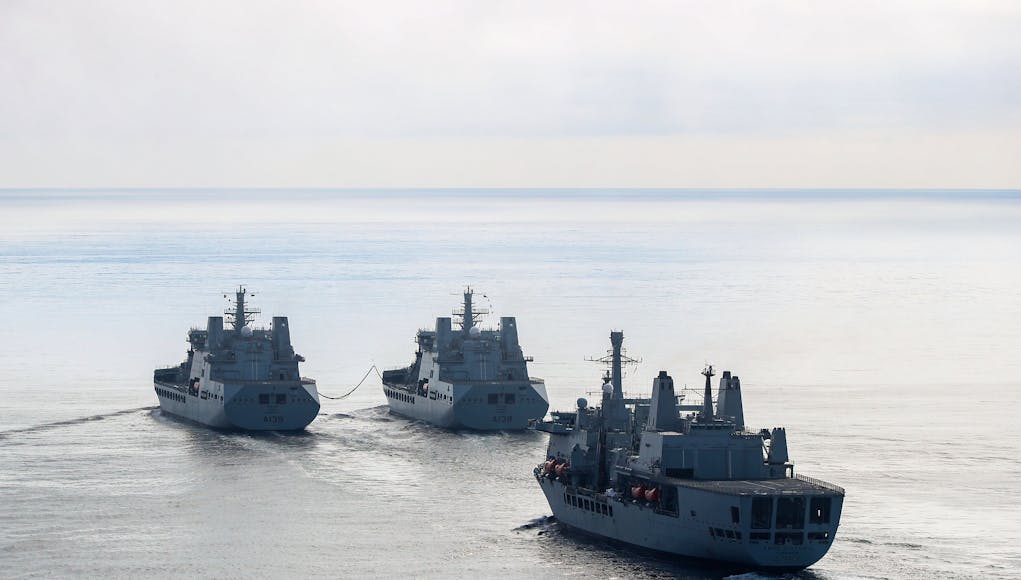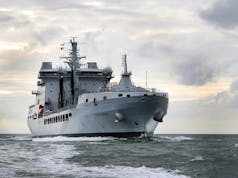In a recent query to the Ministry of Defence, Shadow Secretary of State for Defence, John Healey MP, requested detailed information on the gender composition of the Royal Fleet Auxiliary (RFA) over the past fourteen years.
The response, provided by Andrew Murrison MP, Parliamentary Under-Secretary of State for Defence, highlights a slow but steady increase in the number of women serving in the RFA.
According to the data presented in the House of Commons on April 15, 2024, the total female strength in the RFA has shown incremental growth since 2010.
In 2010, the number of women was recorded at 121, constituting 5.2% of the total personnel. By 2024, these numbers have increased to 175 women, now making up 10.5% of the force.
This detailed breakdown by the Ministry of Defence provides a clear insight into the changing dynamics of gender representation within the Royal Fleet Auxiliary. Below is the detailed breakdown of female personnel strength and their percentage of the total RFA force from 2010 to 2024:
| Year | Total Female Strength | % of Total Strength |
|---|---|---|
| 2010 | 121 | 5.2% |
| 2011 | 129 | 5.5% |
| 2012 | 119 | 5.6% |
| 2013 | 120 | 6.3% |
| 2014 | 121 | 6.6% |
| 2015 | 117 | 6.3% |
| 2016 | 127 | 6.6% |
| 2017 | 134 | 6.9% |
| 2018 | 134 | 7.0% |
| 2019 | 136 | 7.2% |
| 2020 | 146 | 8.0% |
| 2021 | 159 | 8.7% |
| 2022 | 176 | 9.9% |
| 2023 | 173 | 10.0% |
| 2024 | 175 | 10.5% |














Greater female participation in the military should help stave off some of the recruitment issues, so this is very welcome.
Long-term we do need to see an increase in the country’s birth rate. We can’t keep pretending that demographics don’t matter. It may not be the number of boots on the ground any more, but it will be about the number of taxpayers able to foot the bill for a more lightly manned military.
I’d rather see the population decrease, there are too many humans already.
Roll on climate change, then! Another reason we need defence investment…
Well you can’t fault the MOD for their camouflage skills. This is a classic case of hiding something nasty in plain sight and drawing attention to something nice.
It’s great that we now have a higher % of females serving in the RFA than we did in 2010. But let’s not point out that when you do the Math the RFA in 2010 had 2327 personnel and now it’s down to 1716.
Oh and their officers are going on strike.
Yeah I’m sure women could easily account for 50% in the not too distant future…
Yes, just the point I was about to make. Just 175 people being just over 10% of the force makes for shocking reading! How the RFA has fallen, and it’s one of the vital core pillars of the naval service too.
You and ABC beat me to it- a doubling of the percentage of female members of the RFA, but a 31% difference in number- that’s suggesting a 20% loss of overall RFA personnel in the same time period (unless I got my maths wrong, which isn’t unknown).
I’m very glad that women are getting involved- no reason for them not to be. But they need to get more involved to relieve our crewing issues!
…and their ship availability is far from stellar, especially solid support ships.
Not sure how much of ship availability is to do with crew shortages though, apart from our solid support ship issues with the main fault being we only have one ( one of the biggest mistakes of the 2010 defence cuts)
This from Navy Lookout published c.10 months ago: “Between October 2021 and October 2022, the number of RFA sailors declined from 1,840 to 1,750, a loss of nearly 5% from a workforce that was already overstretched. Many RFA vessels are now operating at Tailored Scheme of Compliment (TSOC), the minimum level of crew possible to run the ship safely which can mean 70 or 80 people doing the workload of 100”.
I doubt the situation is any better in early 2024.
Crew shortages will affect availability of course.
Disgraceful that RFA Fort George was cut in that 2010 Review. Worse that Fort Vic is still in the dockyard and unavailable. We lhave had 3 such ships in the first place, and so had 1 or 2 constantly available (providing manpower issues were sorted).
Even worse is that Fort George was cut in order to reactivate the two older Forts which were mothballed at the time. Extremely poor lack of foresight.
It’s hard to consider that we have a world-class Navy with those decisions and that capability shortfall.
The original plan was to have six Fort Victoria class ships ( although they would have had a much wider role then they do now, such as carrying Sea Wolf SAM as a mother ship to a striped down Type 23 ) however we ended up with two plus the two older Fort class ships, the descension to keep the older two forts and scrap RFA Fort George seems total nuts ( and the rumour was that Fort George was in a better material state than Fort Victoria, but Fort Victoria wasn’t due a refit)
Who the heck makes these decisions? – someone very high ranking, highly experienced and very well paid, no doubt.
G, not sure about the “highly experienced” bit.
Well, I meant they have been in the defence world a long time, but not necessarily good at it!
Of all the questions Healey could have asked about the RFA this is surely the least important.
Not many women want a life at sea – so what?
Indeed, there is an actual reality of “family life and having children” that is not really fully compatible with a life at sea..clearly we live in a society where choice is important and when recruiting you should look to every group to maximise numbers…But you forget the simple facts of reproduction and child rearing at your peril…and in reality the large Marjory of women need careers that allow them to spend 20ish years with a lot of focus on raising children….( anyone who tells you the role of mother is not the most important part of a child’s early life is talking BS).
I agree. The armed forces (and RFA) will never fully reflect society and have 50% women. They will always be a minority largely for the reason you state.
So what ? What’s overall recruitment like ? These aren’t the types of figures that matter or that The mod should be chasing. Just get suitable, capable people in…end of story!
The problem with figures like this is they do not take account of the size of the RFA service in 2010 compared with today. The RFA in 2010 had about 2300 serving personnel, today it is 1750. Work the maths out 550 personel fewer but we have only increased females by 54.
The root cause of recruitment issues is likely to be pay. I’ve taken a look at their pay scales and you could earn more working for the Dept of Social Security working in a call centre. Address the pay and your recruitment problems will miraculously evaporate.